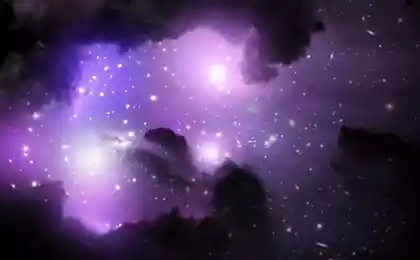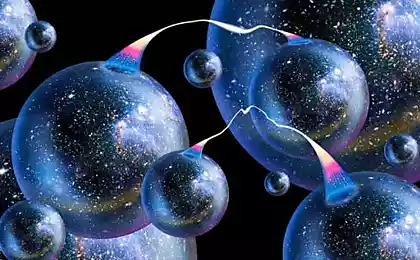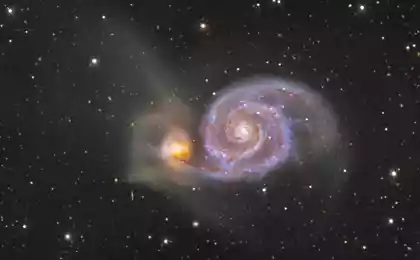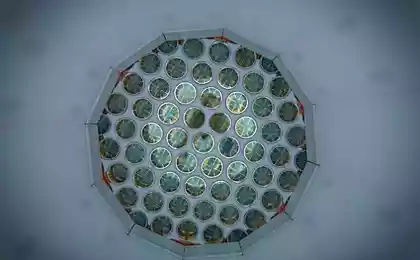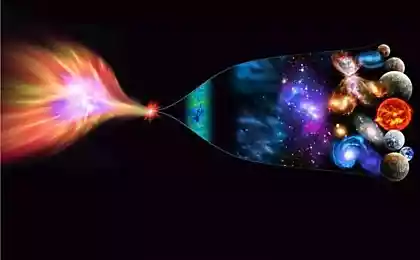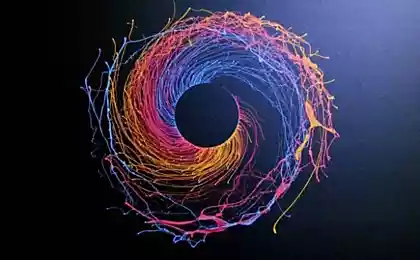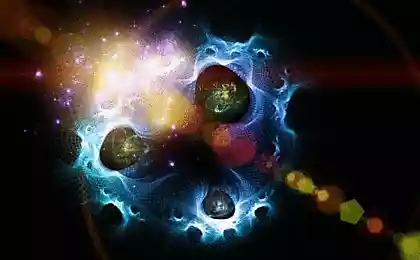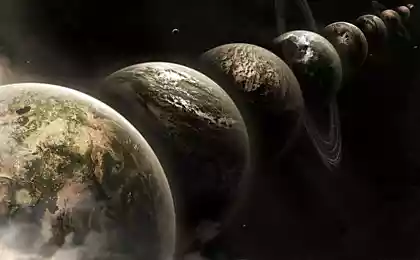532
Attempt to prove the absence of dark energy crashed
For nearly 20 years, physicists know that the universe is expanding rapidly. According to one theory, this strange acceleration occurs due to a mysterious dark energy stretching space. On the other hand, this may indicate not quite the right understanding of gravity.
Physicists expect that the Universe's expansion slows, as the galaxies are drawn to each other under the action of gravity. But in 1998 two independent groups of scientists have traced the history of the expansion of space through the study of supernovae type Ia. Both teams found that the expansion of the Universe is accelerating, suggesting that it is dark energy inflates her like a balloon.
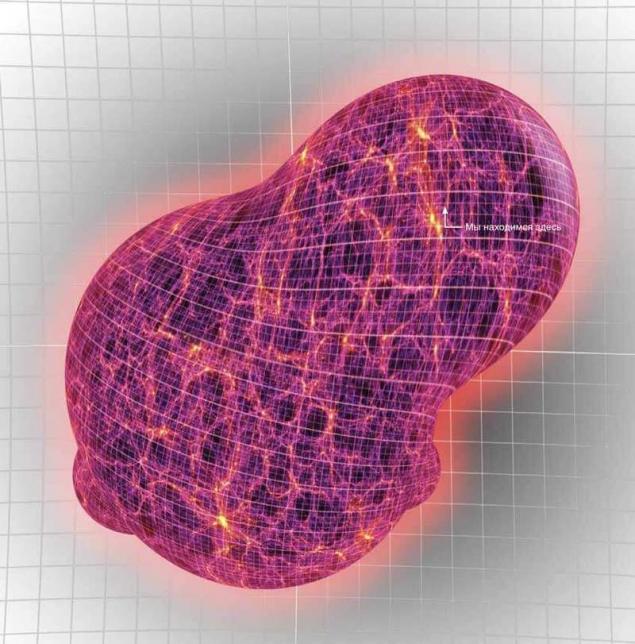
However, it is possible that dark energy exists, and that the General theory of relativity of albert Einstein is not quite true. In his work, a scientist concluded that gravity arises from the curvature of space-time mass and energy. In General relativity, taking into account the distribution of mass and energy, space-time is bent to minimize its curvature (denoted by R). But in the so-called f® theory, space-time is distorted, minimizing not only the curvature, but also some of its additional capabilities. This creates another force that can either attract or repel in different conditions.
In 2007, the physics theorists have shown that by proper choice of the function f® it is possible to explain the accelerating expansion of the Universe without resorting to dark energy. To succeed, an additional force should disappear when gravity is very strong, such as within galaxies or the early Universe, and occur on a large scale in more recent times.
To check such theories of physics needs to explore the Universe on a huge scale. Last year scientists tested the theory f®, by counting the number of galaxy clusters, spanning millions of light years. If the mysterious force extends space, it should slow down the formation of massive clusters, and their number must be less than theory predicts f®. In the end, the researchers found that the number of clusters is consistent with the presence of dark energy. However, the analysis was quite time-consuming. Scientists had to estimate the mass of each of the clusters, consisting mostly of invisible dark matter. In the end, based on the theoretical model of the interaction between ordinary and dark matter, the researchers deduced the mass of the cluster x-ray radiation from hot gas in them.

The nearby giant elliptical galaxy lingerue distant dwarf galaxy.
And now, in a recent study, conducted by astronomers from Peking University (China), applies a new approach to the measurement of the mass of galaxy clusters. The gravity of a massive object can distort the images of objects located far beyond its borders. That is, a galaxy cluster distorts the image of the more distant galaxies, and they are instead to be randomly distributed across the sky, slightly redressed. The power of this "weak lensing" reveals the weight of the front of the cluster. To map the weak lensing, scientists have obtained images of the 5.5 million clusters and galaxies. New data on the masses of clusters are also consistent with the prediction of the existence of dark energy and weaken the arguments in favor of the theory of f®.
"At the moment it's the best large-scale measurement of cosmic proportions. A new result almost killed the theory f®," said Bob Nichol from Portsmouth University (UK).
It is also interesting to Understand the Universe: what is quantum and what is his love psychics
10 amazing galactic phenomena
However, some scientists doubt the correctness of the new method. They believe that testing the theory f® requires taking into account the detailed distribution of dark matter within individual clusters, since it affects the interaction between dark and ordinary matter. So, in their opinion, the issue with theory f® remains open.published
P. S. And remember, just changing your mind — together we change the world! ©
Source: in-space.ru/popytka-obyasnit-otsutstvie-temnoj-energii-poterpela-krah/
Physicists expect that the Universe's expansion slows, as the galaxies are drawn to each other under the action of gravity. But in 1998 two independent groups of scientists have traced the history of the expansion of space through the study of supernovae type Ia. Both teams found that the expansion of the Universe is accelerating, suggesting that it is dark energy inflates her like a balloon.

However, it is possible that dark energy exists, and that the General theory of relativity of albert Einstein is not quite true. In his work, a scientist concluded that gravity arises from the curvature of space-time mass and energy. In General relativity, taking into account the distribution of mass and energy, space-time is bent to minimize its curvature (denoted by R). But in the so-called f® theory, space-time is distorted, minimizing not only the curvature, but also some of its additional capabilities. This creates another force that can either attract or repel in different conditions.
In 2007, the physics theorists have shown that by proper choice of the function f® it is possible to explain the accelerating expansion of the Universe without resorting to dark energy. To succeed, an additional force should disappear when gravity is very strong, such as within galaxies or the early Universe, and occur on a large scale in more recent times.
To check such theories of physics needs to explore the Universe on a huge scale. Last year scientists tested the theory f®, by counting the number of galaxy clusters, spanning millions of light years. If the mysterious force extends space, it should slow down the formation of massive clusters, and their number must be less than theory predicts f®. In the end, the researchers found that the number of clusters is consistent with the presence of dark energy. However, the analysis was quite time-consuming. Scientists had to estimate the mass of each of the clusters, consisting mostly of invisible dark matter. In the end, based on the theoretical model of the interaction between ordinary and dark matter, the researchers deduced the mass of the cluster x-ray radiation from hot gas in them.

The nearby giant elliptical galaxy lingerue distant dwarf galaxy.
And now, in a recent study, conducted by astronomers from Peking University (China), applies a new approach to the measurement of the mass of galaxy clusters. The gravity of a massive object can distort the images of objects located far beyond its borders. That is, a galaxy cluster distorts the image of the more distant galaxies, and they are instead to be randomly distributed across the sky, slightly redressed. The power of this "weak lensing" reveals the weight of the front of the cluster. To map the weak lensing, scientists have obtained images of the 5.5 million clusters and galaxies. New data on the masses of clusters are also consistent with the prediction of the existence of dark energy and weaken the arguments in favor of the theory of f®.
"At the moment it's the best large-scale measurement of cosmic proportions. A new result almost killed the theory f®," said Bob Nichol from Portsmouth University (UK).
It is also interesting to Understand the Universe: what is quantum and what is his love psychics
10 amazing galactic phenomena
However, some scientists doubt the correctness of the new method. They believe that testing the theory f® requires taking into account the detailed distribution of dark matter within individual clusters, since it affects the interaction between dark and ordinary matter. So, in their opinion, the issue with theory f® remains open.published
P. S. And remember, just changing your mind — together we change the world! ©
Source: in-space.ru/popytka-obyasnit-otsutstvie-temnoj-energii-poterpela-krah/

